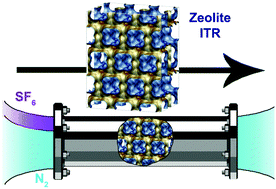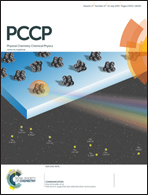Zeolites for the selective adsorption of sulfur hexafluoride†
Abstract
Molecular simulations have been used to investigate at the molecular level the suitability of zeolites with different topology on the adsorption, diffusion and separation of a nitrogen–sulfur hexafluoride mixture containing the latter at low concentration. This mixture represents the best alternative for the sulfur hexafluoride in industry since it reduces the use of this powerful greenhouse gas. A variety of zeolites are tested with the aim to identify the best structure for the recycling of sulfur hexafluoride in order to avoid its emission to the atmosphere and to overcome the experimental difficulties of its handling. Even though all zeolites show preferential adsorption of sulfur hexafluoride, we identified local structural features that reduce the affinity for sulfur hexafluoride in zeolites such as MOR and EON, providing exclusive adsorption sites for nitrogen. Structures such as ASV and FER were initially considered as good candidates based on their adsorption features. However, they were further discarded based on their diffusion properties. Regarding operation conditions for separation, the range of pressure that spans from 3 × 102 to 3 × 103 kPa was identified as the optimal to obtain the highest adsorption loading and the largest SF6/N2 selectivity. Based on these findings, zeolites BEC, ITR, IWW, and SFG were selected as the most promising materials for this particular separation.



 Please wait while we load your content...
Please wait while we load your content...